The elephant-headed deva (God) – Ganesh is lovingly worshipped and revered by millions of people worldwide. He is perhaps one of the most interesting deities in the Hindu pantheon. The son of Shiva and Parvati, Ganesh, is the God of good luck and auspiciousness and is the dispeller of problems and obstacles -Vignahartha. He is the master of ceremonies and is the first to be revered and prayed to, whenever a puja is performed. He is believed to bring prosperity and initiate new beginnings. He is also worshipped as the God of wisdom, wealth, health, celibacy, fertility and happiness.
Although Ganesh the auspicious Lord of the Ganas is known through the Hindu religion, he transcends different religions and is loved by people from all walks of life. Ganesh is worshipped by both Vaishnavaites (devotees of Vishnu) and Saivites (devotees of Shiva). In the Panchayatana puja, Ganesh is glorified as one of the five prime Hindu deities (Brahma, Vishnu, Shiva, Shakti and Ganesha) whose worship confers immortality and liberation.
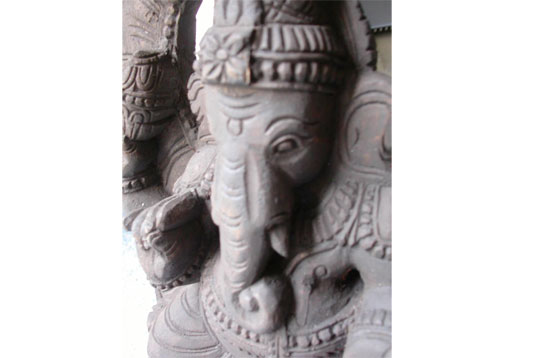
(Image source)
Ganesh Around the World
Ganesh was not restricted to India alone. Some of the earliest images of Ganesh are found outside India. Faith in Ganesh transcends the boundaries of culture, language, and religion. He is a global traveller who has charted vast territories- from India to Tibet, China, Thailand, and Japan.
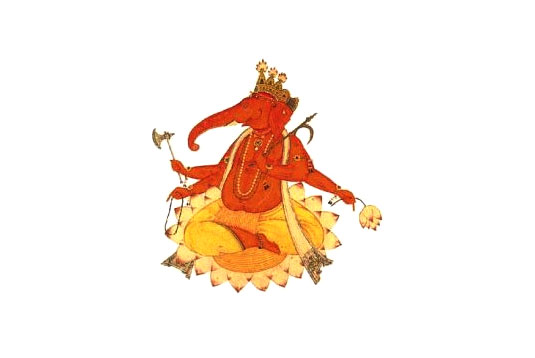
Lord Ganesh: the lord of beginnings and wisdom.
(Image source)
The earliest elephant-headed human figure appears on a plaque found in Luristan, in Western Iran dating back to between 1,200-1,000 BC.
According to legend, Emperor Asoka’s daughter Charumati built a temple for Ganesh in Nepal, and the earliest surviving Ganesh in Nepal belongs to the 8th century. Ganesh occasionally found a place alongside Mahavir, in the major Svetambara branch of Jainism, as well as among Buddhists from Nepal and other countries.
The Ganesh cult expanded and travelled outside India to South-East Asia, Burma, Thailand, Cambodia, Indonesia, Tibet, China, Central Asia, Mongolia and Japan, with Hinduism and Buddhism in the Gupta period.
In Tibet, Ganesh is placed above the entrance of Buddhist monasteries or painted on the doors, often holding a trident and is identified with Shiva. In Tibetan Buddhism, the practice associated with Ganesh, as Buddhist Tantric deity Maharakta, survives up to this day. The Tibetan Ganesh appears, besides bronzes, in the resplendent Thangka paintings alongside the serene Buddha. He is also regarded as a manifestation of the Avalokiteshwara.
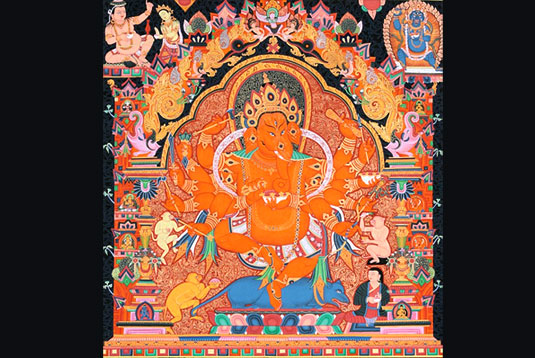
A dancing Tibetan Ganesh. (Image source)
There are those who chant his glory. There are those who worship and adore him. There are those who seek his darshan(audience). There are those who tell stories about him. There are those who invoke and invite his blessings. There are those who lovingly sing his praises. In Thailand, Ganesh is known as Phra Phikanet and is worshipped as the deity of good fortune. Here he is associated with arts, education and trade.
In Khotan or Chinese Turkestan, Ganesh was painted on wooden panels and bronze tablets. From Khotan, Ganesh reached China, and the earliest Chinese image of Ganesh is found at Kung-Hsien, a two-armed seated figure holding a lotus dated to AD 531, and this image is described as the ‘‘Spirit King of Elephants’’.
In Japan, he is worshipped as Kangiten or Binayaka-ten. Here he is offered radishes, wine, and fresh fruits and bliss buns made of curd, honey, and flour. Kangiten is a secret esoteric form of the deity. Kangiten symbolised the union of the individual with the universal spirit and consists of two Vinayakas embracing each other. Another form, Vajra Vinayaka or Kakuzencho, had three heads with three eyes, holding a sword, radish, sceptre and Modak. In Greece, Janus, the god in Greek mythology after whom the month of January was named, has the head of an elephant. Sometimes, he is depicted as a two-headed deity. Like Ganesh, Janus is worshipped at the beginning of any auspicious occasion.
Afghanistan was once a land of Hinduism and Buddhism; there is evidence of Ganesh images, and statutes in their semi-destroyed state now in this country.
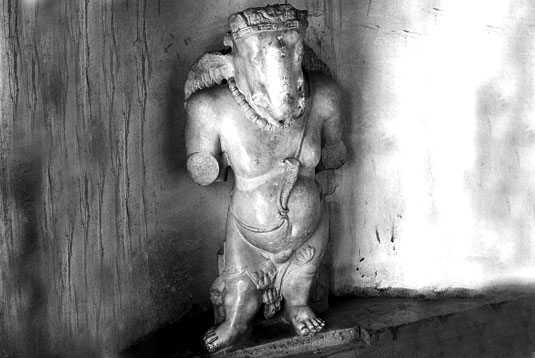
Marble Maha Vinayaka (today partly destroyed)
In Sri Lanka, the oldest image of Ganesh is found in the Kantak Chaitya in Mihintale dating to the 1st century BC. The Ganesh idol at Subrahmanyam temple in Katargama town is still worshipped. People from all religions other than Hinduism also visit this temple, for this Ganesh is believed to grant the wishes of his devotees.
Ganesh is a vibrant presence whose benediction is sought by traders, travellers, artists and statesmen. As lord of business and diplomacy, he sits on a high pedestal outside Bangkok's World Trade Centre, where people offer flowers, incense and a reverential Sawasdee. Even Muslim Indonesia reveres him and European scholars call him the 'Indonesian God of Wisdom'. The image of Jalan Ganesa, of Bandung, adorns the 20,000 rupiah notes. The Indonesian Government’s 20,000 rupiah note also has Lord Ganesh's picture. According to the Finance Minister of Indonesia, - The biggest Islamic Nation- the reason for putting Ganesh's picture is to "remove all obstacles from the financial development of the State, whose economy during the last ten years has suffered many crises."
There is evidence of Ganesh's worship in Latin America and Europe also.
In India, Ganesh is invoked at the very beginning of a multitude of occasions, in everyday prayer, before entering into a new home, before inaugurating an office, building, or shop, before starting a journey, a business venture, before taking an examination, in invitations for weddings, before starting auspicious ceremonies like marriage, thread ceremony and other various occasions.
Fear of the unknown is the most basic of human emotions that affects all, irrespective of country or religion. Ganesh helps one to cope with fear and anxiety; hence he is present in different cultures; guiding people through ambivalence, and bringing clarity and a fresh perspective.
Who is Ganesh?
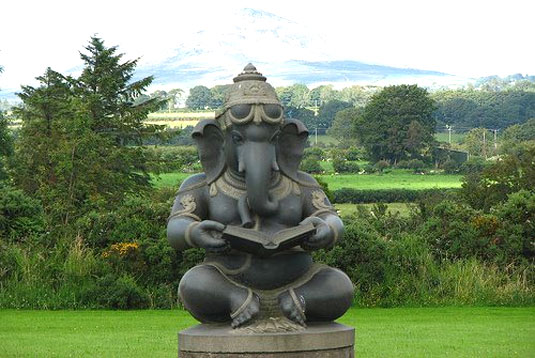
(Image source)
Apart from stirring the devotee’s soul, Ganesh has seeped into our cultural conscience completely. The devotees worship, and the thinkers think. There are those who represent him in art and literature. Anthropologists, artists, historians, indologists, linguists, philosophers, sociologists, musicians, dancers, filmmakers and devotees of Ganesh all have been exploring this question and have been answering it in their own way. It is in this quest, the creative outpourings of this enormously popular deity that have brought in numerous products covering almost all aspects of our lives. The physical, spiritual and mythological representation of Ganesh offers more iconographic variations than does that of any other Indian deity. Ganesh embodies enormous popularity that transcends sectarian and territorial limits.
It is in answer to this question that the following pages are addressed. A brief exploration of Ganesh’s significance, his representations, and his omnipresence in the multiple media is what will be presented in the following pages.

